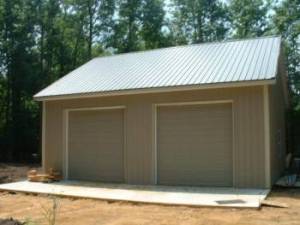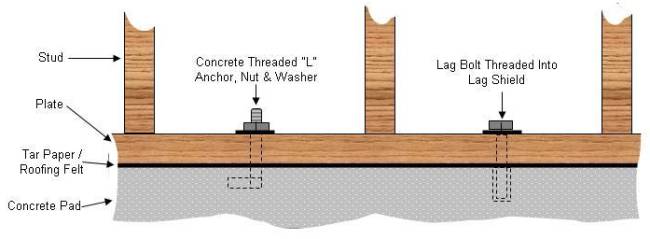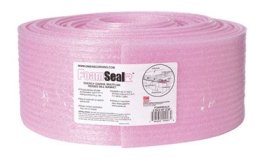
Figure 1 - Garage constructed on concrete pad
The type of fastener used to hold the building or structure to the pad is determined by whether the pad is in place or will be poured.
Concrete Pad To Be Poured:
When pouring the concrete pad insert L
concrete foundation bolts, as shown in Figure 2, into the concrete in the correct position, the center of the bottom sill plate of the stud wall. Before inserting the concrete anchor into the concrete apply a grease or Vaseline on the threads to prevent wet concrete from adhering to the threaded part of the bolt.

Figure 2 - L
concrete bolt
Make sure that the bolts are truly vertical - 90 degree angle from the concrete pad. If they are not vertical, you will have problems mounting the bottom sill plate over them.
The bolt should protrude 3″ to 3 1/2″ from the finished surface of the concrete pad. Use a large washer and nut to fasten the bottom plate. The hole drilled in the bottom plate should be 1/8″ larger than the diameter of the bolt. This allows for expansion and contraction of both the concrete pad and the bottom wood sill plate.
Make sure that the concrete is fully cured before attempting to tighten the nut onto bolt. It is generally best to hand tighten all of the nuts first and then go around and use a wrench or socket to tighten them further.

Figure 3 - Bolting a garage, shed or other wooden structure to a concrete pad
Concrete Pad Already In Place:
If the concrete pad is in place the best way to fasten the bottom sill plate of the wall, to the concrete pad, is by using a lag shield, as shown in Figure 4, lag bolt, as shown in Figure 5 (sometimes referred to as a lag screw) and a large washer.

Figure 4 - Lag shield
The lag bolt should be 4″ long and a 1/2″ thick. The lag shield should be 2″ long. Using a carbide tipped concrete bit, drill an appropriate sized hole (for a 1/2″ lag bolt, the lag shield usually requires a 5/8″ hole).
Drill a 5/8″ hole in the plate (this allows for some expansion and contraction) then thread the lag bolt through the bottom sill plate and into the lag shield. Use a large washer on the head of the lag bolt to avoid drawing the lag bolt through the lumber.
The bolts should be placed a maximum of 6 feet apart - 4 feet is even better. There should be a bolt within 2 feet of every corner. Cadmium plated or galvanized bolts will work, but for a longer life consider using stainless steel.
Use a layer of tar paper or roofing felt to keep the bottom sill plate from having direct contact with the concrete pad in order to prevent moisture from being drawn up through the pad and into the lumber. This will help prevent the wood sill plate from rotting.
Note: A relatively new product, sill plate gasket
, as shown in Figure 6, replaces tar paper or roofing felt when installing the sill plate.

Figure 6 - Sill seal
Trick: When placing the concrete anchors, either the L
bolts or lag shields, mark a length of 2 X 4 with the position of the studs, lay it beside the concrete pad and insert the concrete bolts between
marks. By doing this you will avoid having the concrete bolt end up under a stud position.
